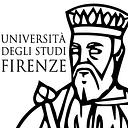Venice and the Veneto during the Renaissance: the Legacy of Benjamin Kohl
From Firenze University Press Book
Edited by:
Michael Knapton, University of Udine
John Easton Law, Swansea University
Alison A. Smith, New York University Wagner

This book pays tribute to Benjamin Kohl as a scholar, collaborator, teacher,
mentor and friend. It specifically commemorates his commitment and
contribution to scholarship by offering readers a collection of historical essays
which reflect both his wide range of research interests in medieval and
Renaissance Italy, and the international esteem and affection in which he was
held. In publishing essays it resembles other commemorative volumes, as it
does by including a profile of the historian remembered — in our case, words
from both the head and the heart by Reinhold Mueller, Kohl’s lifelong colleague and friend — and also a list of his publications. But this collection differs from many others in two ways. First, by including unpublished material written by the historian commemorated, who was working hard at various projects and went on doing so for as long as he could, until just before he died. Posthumous publication entails limitations and risks, especially since living authors are inclined to modify their writings, sometimes in much more than formal details, through to the phase of proof-reading. But Benjamin Kohl’s family, friends and colleagues have encouraged us editors to publish four of his pieces, with due care in facing those limitations and risks, and they indeed form an important part of the book.
The substantial essay on “Competing Saints” was virtually readied for publication by the author himself; the sources edited in “The Serrata of the Greater Council” have been brought forward from Kohl’s draft with great understanding by Mueller. “The Changing Function of the Collegio” and “Renaissance Padua as Kunstwerk” are shorter texts prepared as conference papers, to which editing has added polish and a few titles in the footnotes; they are included here for their capacity to stimulate scholarly debate and further research. The second difference between this and many other collections is the extent to which the single essays converge in terms of place, period and subject. Our choice of a tighter focus was primarily motivated by the desire to bracket scholarly interests cultivated by Benjamin Kohl himself, and the three sections of the book do indeed reflect those interests, asmthe list of his publications and the profile by Reinhold Mueller both confirm.
Although we have not included a section on humanist culture, its practitioners
and their writings, a subject to which Kohl devoted a significant part of his
research, humanism does in fact feature in the essays, especially among Monique O’Connell’s Chancery secretaries and the authors reviewed by John
Richards in examining Altichiero’s posthumous reputation. Each single author
is far better fitted than us to explain her or his work, but the short presentation that follows aims primarily to suggest the overall cohesion we have sought for.
DOI: 10.36253/978–88–6655–663–3
Read Full Text: https://fupress.com/catalogo/venice-and-the-veneto-during-the-renaissance-the-legacy-of-benjamin-kohl/2871
